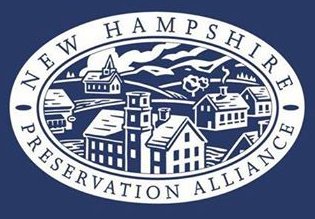Ask a Preservationist: What Shade of White is the Most Historically Accurate?
At the N.H. Preservation Alliance, we are often asked questions where we know the answers would benefit other people interested in historic preservation. Below is a question from one Granite-Stater on historically accurate paint colors
“The Hill Center Church [Seven to Save 2022] needs a paint job this year and our painter asked us what shade of white we want. What’s the most historically accurate for our 1800 meetinghouse, renovated in the 1840’s.”
A history of “white” paint on New England buildings
The current siding color on the Hill Center Church. They are looking to repaint in an historically accurate shade of white.
A trip to the paint section of any hardware store is enough to determine that merely looking for “white” paint is not nearly accurate enough. From Eggshell to Whipped Cream to Porcelain, and everything in between, it’s clear that the search for the perfect color needs to be much more specific. Modern technology allows us to be incredibly precise with regard to the exact shade we want. Historically, however, anyone looking to paint their building would be confided to a more limited color palette. If you wanted to paint your building white, you would be constrained by what you had available both from a technological and a fiscal perspective.
When titanium dioxide was made commercially available in 1921, the definition of “white” was forever changed. Suddenly, achieving a consistent bright white was affordable. Titanium dioxide’s debut came at a good time for the paint industry, too. The fashionable Colonial Revival architectural style, with its white clapboards and green shutters advertised through catalogs and magazines, cemented the notion that New England buildings were always painted white.
We know, however, that this is not true. In the nineteenth century, paint was often mixed on site by blending linseed oil, lead powder, and pigments. Natural materials just couldn’t provide a bright white finish, and so “white” paint had more of an off-white, or even yellowish, tinge.
But was white really the most popular color?
Despite popular conceptions of the image of New England buildings, we know that many meetinghouses were not even painted off-white. Construction documents from the 18th and 19th century suggest that meetinghouses, especially in the Monadnock area, were ochre, red, or yellow in color. The Washington Meetinghouse was a “red ochre” from the 1780s through at least 1831 (when the public elevations were painted white and the less-public elevations were left red). Dunbarton was “a good stone color,” as were Jaffrey and Canaan. Canaan even specified sky blue doors.
Jefferson’s Methodist Church, also a 2022 Seven to Save, but built much later in 1868, was first painted red. Sugar Hill’s St. Matthew’s Chapel – known for its white paint amidst fields of lupines – was also first painted red when it opened in 1893.
Returning to an historically accurate color palate
The United Baptist Church of Lakeport recently decided to return to the church’s original color palette.
Despite growing evidence about the inaccuracies of bright white paint, a century of good marketing and changed perceptions can be difficult to overcome.
In Laconia, the United Baptist Church of Lakeport (Seven to Save 2021) opted to return to the 1890s colors after decades of its fanciful shingles and banding all painted white. Many in the congregation wanted to keep the church white, but when the organist and church historian offered to pay for the difference in cost, the ayes had it.
At the Grafton Center Meetinghouse (Seven to Save 2017), it had been nearly thirty years since anyone had even seen the clapboards under the white vinyl siding. Mascoma Valley Preservation wanted to return the building to its 1856 appearance and did an informal paint analysis with the chunks of paint under the window sills, revealing a yellowish white.
So what’s the most accurate color for the Hill Center Church?
All of this is to say that when Hill Center Church was renovated in the 1840s to become solely a church – the paint color was likely an off-white. The level of “off” is up to you. If your board is adventurous or interested in the most accurate color, shoot for something like Benjamin Moore’s “Indian White.” If that’s too different, work with your painter to find a happy medium. We suspect you’ll be happy with the results.
Do you have a question? We’d love to answer! Email us at: projects@nhpreservation.org


